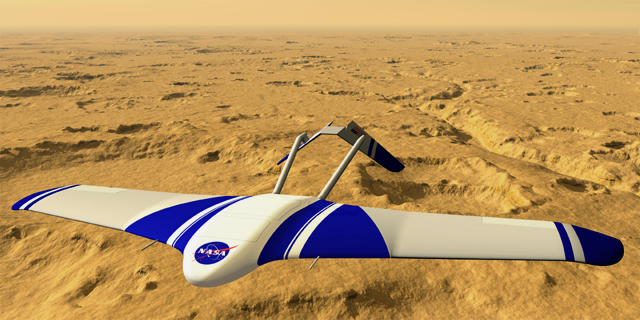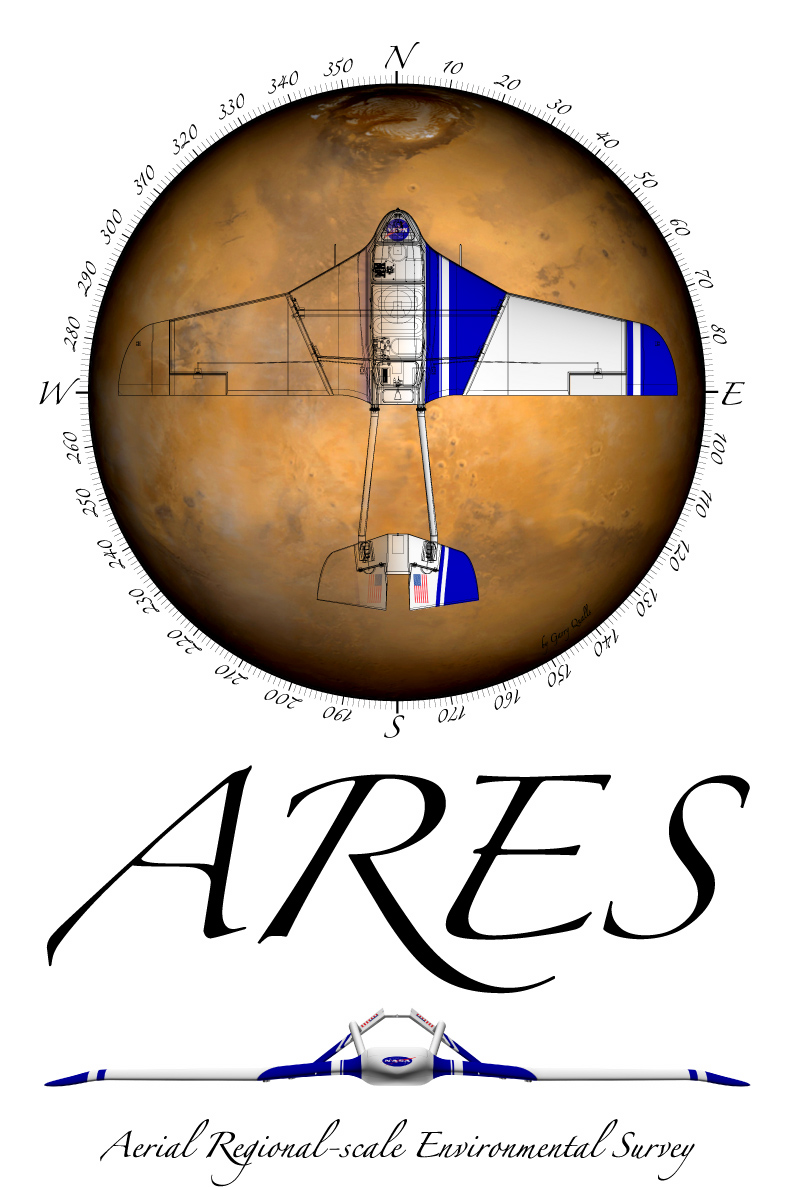Martian Airplane
I guess I'm a little behind the curve on this, because I hadn't heard about NASA's ARES Martian airplane program before this weekend. The idea has been in development for awhile. In December of 2002 it was chosen as one of the four finalist programs for the next generation of Mars scout missions.
Here's a video of the NASA project leader Dr. Joel Levine talking about the ARES program. It has some great animations and a film of a high altitude test (there's more video here).
ARES stands for "Aerial Regional-scale Environmental Survey." It represents an intermediate program between martial orbital surveyors and surface vehicles. It would be able to give a close view of thousands of miles that simply can't be had from space. It is thought that a Martian airplane would be the best vehicle for tracking those mysterious methane signatures that are thought by some scientists to be evidence of life. And wouldn't it be nice to have an up close aerial view of potential landing sites?
It's a tricky thing to design an aircraft for a planet that we've never been to. The atmosphere is thin. According to Levine, surface air density is like our atmosphere at 100,000 feet. This means that the wings had to be designed for maximum lift. The aircraft will use rocket propulsion. Apparently the atmosphere is too thin to use a propeller or jet power. And that's not oxygen an engine would be intaking - it's mostly CO2.
The lift issue is helped by the fact that gravity is less too - about 38% of Earth. All this has been taken into account in the design of this aircraft.
Because there is a fifteen minute communication delay between Earth and Mars it simply will not be possible to remotely pilot this craft like a Predator UAV. The ARES has to be self-sufficient. I'm a lot more confident that we have reached that level of robotic sophistication after the latest DARPA Grand Challenge than before.
I'm sure there are many reasons for the declining number of engineers in the United States, but NASA's backing away from big challenges over the last three decades could be part of the problem. But this program is the sort of challenge that inspires kids to take an interest in science - and high school grads to think about engineering as a career. There's something awe-inspiring about flying over an alien world.


Comments
I don't have it here to check, but Robert Zubrin designed an engine that would work in Mars' atmosphere. I think it used CO (carbon monoxide) as the fuel and CO2 as the oxidizer. But I could be wrong on the details.
Probably not useful for a remote mission, but would probably be a big area of research for a long term manned mission.
Posted by: AndrewS![[TypeKey Profile Page]](http://www.blog.speculist.com/nav-commenters.gif) |
October 24, 2005 10:08 AM
|
October 24, 2005 10:08 AM